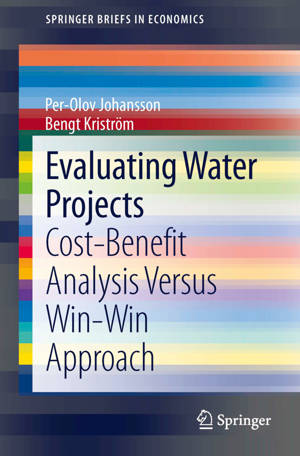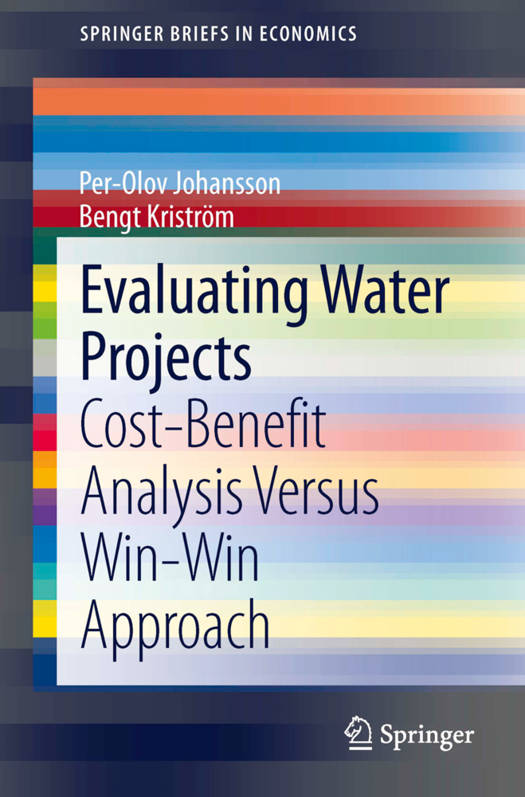
- Afhalen na 1 uur in een winkel met voorraad
- Gratis thuislevering in België vanaf € 30
- Ruim aanbod met 7 miljoen producten
- Afhalen na 1 uur in een winkel met voorraad
- Gratis thuislevering in België vanaf € 30
- Ruim aanbod met 7 miljoen producten
Evaluating Water Projects
Cost-Benefit Analysis Versus Win-Win Approach
Per-Olov Johansson, Bengt KriströmOmschrijving
Should more water be diverted to or from electricity generation? This timely question is addressed in this short volume. Two different approaches are introduced and compared:
The first is a cost-benefit analysis, examining the case of re-regulating a Swedish hydropower plant in which water is diverted from electricity generation to the downstream dryway. The proposed scenario generates environmental and other benefits, but comes at a cost in terms of lost electricity.
The second study introduces an approach very different from the one used in conventional cost-benefit analysis, and provides a set of measures designed so that most, if not all, affected parties will be better off. Thus, in contrast to a conventional cost-benefit analysis, which draws on hypothetical compensation measures, the new approach envisages actual compensation.
Comparing two different theoretical frameworks on the basis of a real-world case, this study can be seen as a manual that can be used to evaluate reasonably small re-regulation of rivers.
Specificaties
Betrokkenen
- Auteur(s):
- Uitgeverij:
Inhoud
- Aantal bladzijden:
- 67
- Taal:
- Engels
- Reeks:
Eigenschappen
- Productcode (EAN):
- 9783642367892
- Verschijningsdatum:
- 18/04/2013
- Uitvoering:
- Paperback
- Formaat:
- Trade paperback (VS)
- Afmetingen:
- 156 mm x 234 mm
- Gewicht:
- 117 g

Alleen bij Standaard Boekhandel
Beoordelingen
We publiceren alleen reviews die voldoen aan de voorwaarden voor reviews. Bekijk onze voorwaarden voor reviews.











